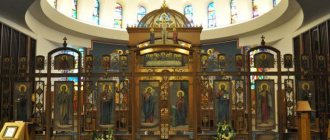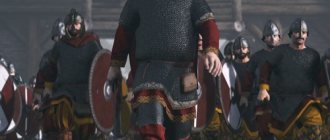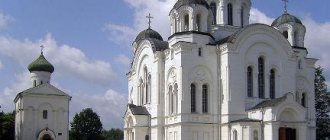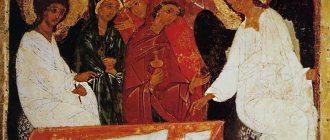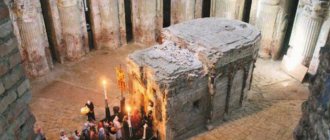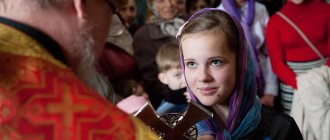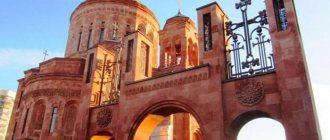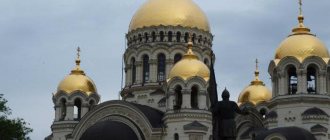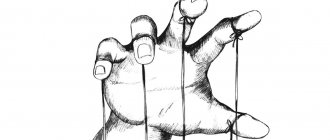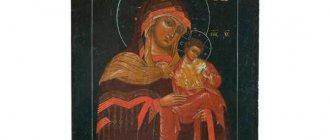Before starting the topic of the Stone of Confirmation in the Church of the Holy Sepulcher, let us turn to the Gospel words spoken by the Creator of the entire universe.
Jerusalem! Jerusalem, who kills the prophets and stones those who are sent to you! Before the crucifixion, Jesus sighed so much for this city! More than once he wanted to gather his children, like a bird gathers its chicks under its wings. But they did not want to do this. Therefore, the Lord left their house empty until they exclaimed: “Blessed is He who comes in the name of the Lord!”
Stone of Confirmation in the Church of the Holy Sepulcher
The city of Jerusalem is located on the plateau of the Judean Mountains, on the watershed between the Dead Sea and the Mediterranean Sea. This city has become sacred to major religions such as Judaism, Christianity and Islam.
As the Bible says, somewhere in the year 1000 before the coming of Jesus Christ into the world, King David, who led the Jews, conquered the city from the Jebusites. He built his fortress here, which became known as the “City of David.” The ruler proclaimed this city the capital of the kingdom of Israel, where the greatest shrine of the Jews, the Ark of the Covenant, was kept. Thus, David created a city where religious belief was fully represented, with shrines from all twelve tribes of Israel.
Stone of Confirmation. Jerusalem. Temple
The history of the Church of the Holy Sepulcher itself begins with the reign of Emperor Constantine and Queen Helena. The construction of the temple was entrusted to two architects - Eustach and Zinovy.
It consisted of three parts: Anastasis, presented in the form of a rotunda, the Garden of Joseph of Arimathea and Golgotha. Here you can also see a basilica of five naves, which are elongated rectangular buildings. In 335, on September 14, the new temple was solemnly consecrated in the presence of the emperor himself.
Construction of a new temple
The temple stood beautiful and majestic until the Persians captured the city in 614. Emperor Romanus began restoring the shrine in 1031. But three years later, a strong earthquake destroyed the building.
Then, in 1048, Emperor Constantine began the restoration of the temple. But soon the crusaders begin to rebuild it. This story has survived to this day.
Today, a huge number of pilgrims and tourists come to Israel. The Church of the Holy Sepulcher in our time is a huge architectural structure with a dome, under which there is the Edicule, the Catholicon (the Patriarchal Cathedral Church of the Jerusalem Orthodox Church), then there is the underground Church of the Finding of the Life-Giving Cross, then the Church of St. Equal to the Apostles Helen and several more borders.
Holy Sepulcher
The Church of the Holy Sepulcher (or the Church of the Resurrection of Christ) is the end point of the Way of the Cross. It is believed that the Christian shrine is located on the very spot where Jesus was crucified and buried. This is where He was resurrected. And in honor of this joyful event for all Christians, a very beautiful ceremony of the descent of the Holy Fire is held in the temple every year.
I can imagine what’s going on there on Easter, even if in September, when we were there, there was just a sea of people! There was a long queue to get to each shrine. Thank God our guide is “his own man” there and we almost didn’t stand anywhere for more than half an hour. I heard that people stand there all day (!)
A little history about the Temple of the Lord
At the beginning of our era, the Romans built their pagan temple on the site of Christ's crucifixion. Only in 325 did the Christian Emperor Constantine I and his mother Helen demolish it, excavate it and build a huge church on the same site. Legend has it that during those excavations three crosses, nails from the execution site and the Holy Sepulcher itself were found.
Unfortunately, only a small part of that stunning complex has survived to this day - with marble cladding, precious castings and mosaics. It must have been very beautiful...
Naturally, after Constantine I, the Temple was destroyed and rebuilt many times. They say that rumors of another destruction of the Temple became the main reason for the crusade!
What now?
The modern version of the Temple consists of many chapels, a couple of monasteries, an old rotunda with a chapel with the Holy Sepulcher (this place is called Edicule), Golgotha with the site of the Crucifixion and an underground temple of the Finding of the Life-Giving Cross.
Edicule. Church of the Holy Sepulcher
I was surprised to learn that the Temple is divided between six (!) churches: Catholic and Greek Orthodox (which is logical) plus Syrian, Armenian, Coptic and even Ethiopian! Each of the services has its own "schedule" for prayers and services. And no one bothers anyone...
In general, this Temple simply amazes with its grandeur. I was amazed that there was no electric light there - only from candles and lamps, so it was always twilight there. The Orthodox hall is very large and beautiful. Once, when we were at the liturgy in this Temple at night, I decided to go outside for a walk and... got lost! I left the Orthodox hall and the main hall, where the Holy Sepulcher is, and I didn’t understand whether I was on the street or inside - it’s so big and dark, especially at night you can’t walk around there
Oh, and I really liked the story about the stairs! An ordinary wooden staircase is attached to the right window of the facade of the Church of the Holy Sepulcher. I was sure that our group was simply caught up in yet another restoration project. But it turned out that this nondescript construction stepladder has been standing in this place for about 100 years! And some mason put it there (now no one even remembers his name).
In general, this staircase rests on the cornice of one church, and is placed against the window of another. And in such a “visual” way it symbolizes “peace and friendship” between six faiths. It turns out that without the consent of each of them, nothing in the temple can be repaired, changed or rearranged!
And in the Church of the Holy Sepulcher there is kept... the navel of the Earth! A marble hemisphere hangs directly under the dome on a special stand. Now the “navel” (Jerusalem was previously considered the center of the earth) is chained to the ceiling with a powerful chain - they are afraid that someone will move or take the cup with them!
Well, my favorite story is about the keys to the Temple. Back in the 12th century, they decided that the keys to the Church of the Holy Sepulcher would be kept in one Muslim (!) family, and another (again, Muslim) family had the right to open and close the doors of the Temple!
So, both the keys and the right to “open and close” have been passed on in these families from father to son for hundreds of years. And every day the head of the Nusein family solemnly unlocks the doors of the Temple at dawn and locks them at sunset.
I wonder how the representatives of these families themselves feel about their honorable duty?
Description and main relics
Here you can see the holiest relics of the world and touch the most ancient values that became silent witnesses of those great events that tell about the life of Jesus Christ.
The Stone of Confirmation in the Church of the Sepulcher is presented in the form of a slab on which the bloody and tortured body of the Savior was placed.
The followers of the teachings of Christ, Nicodemus and Joseph of Arimathea, having removed the body of Jesus from the cross, first laid Him on a stone slab in order to then perform the ritual of anointing. And only then he was transferred to the tomb that Joseph had prepared for himself. This man was a secret disciple of the Lord, a rich and noble member of the Sanhedrin.
Interesting Facts
The Stone of Anointing is one of the most important relics. Many believe that the sacred myrrh emanates from it, and by running a handkerchief over the surface, you can improve your health. Tourists can also see and learn the following interesting points:
- the stone is hidden by a protective slab of pink marble - it protects the ancient shrine from the destructive influence of touch;
- the shrine is owned by 4 churches at once - Greek Orthodox, Roman Catholic, Armenian and Coptic;
- a panel describing the removal of Jesus from the cross, the rite of anointing with chrism and burial, created at the end of the 20th century (1990) by Vlasis Tsotsonis;
- 8 lamps burn tirelessly above the stove - 1 for each Christian denomination represented in the temple.
A tour of Jerusalem would not be complete without visiting this place. It has incredible energy and allows you to get in touch with the history of our world and the religions in it.
Joseph and Nicodemus
Kind and truthful, he was not afraid to ask Pilate to take the body of the crucified Nazarene. Having received permission, he took the Lord down from the cross. Having wrapped him in a shroud and carried out the funeral rites prescribed by the Jews, he transferred the body of the Savior to a coffin carved into the rock and rolled a stone onto it. The whole world knows this shroud under the name of Turin. In the biblical prophecies of Isaiah it is written: “He was assigned a grave with evildoers, but He was buried with a rich man.”
The Gospel says that Nicodemus brought myrrh and aloes to anoint the body of the Savior.
Description of the shrine
As mentioned above, the Stone of Confirmation is located in the Church of the Holy Sepulcher right in front of the entrance. It was specially covered on top with a smoothly polished marble slab 30 cm thick. The original pink limestone stone is stored under the slab. Its size is 2.7 m in length and 1.3 m in width. On the sides of the panels, on a marble board, the text of the troparion to the righteous Joseph is carved in Greek. Behind the stone you can see a colorful stylized mosaic panel in the Byzantine style, depicting the descent from the cross, the anointing of the body with incense and the burial process of the Savior. With the blessing of His Beatitude Patriarch Diodorus of Jerusalem, a wall was erected between the confessional plots.
Stone of Anointing
The Stone of Anointing is one of the oldest Christian shrines. It is a stone slab lined with marble, inside which is enclosed the Holy Stone itself, on which the Body of Jesus was laid before burial. When Joseph and Nicodemus (followers of Christ) took Him down from the Cross, laid Him on the Stone, anointed Him with perfume (myrrh) and wrapped Him in the Shroud. After this, the Body was taken from here and placed in a tomb. The Stone of Anointing is located directly opposite the entrance to the main Jerusalem temple - the Resurrection of the Lord, and it appears first before the eyes of those entering. The size of the slab is about 3 m in length and almost 1.5 m in width, the thickness of the stone is 0.3 m. The troparion of St. is inscribed on the sides. Joseph from Arimathea. Not far from the shrine, on the wall, there is a mosaic panel depicting the most important gospel events. The mosaic was created in the 19th century with the blessing of Patriarch Diodorus of Jerusalem. It symbolizes the border of interfaith possessions. During Byzantine times (395-1453), the Stone of Anointing was located in the chapel of St. Mary, which was subsequently destroyed by the crusaders who were rebuilding the Temple. On the western side of the shrine, within 12 m, there is a square ciborium, as well as the facing of the Stone in marble. Until the beginning of the century before last (1810), the Stone of Anointing belonged to the Catholic Order of St. Francis of Assisi, as evidenced by the mark in the form of two crossed hands. At that time, the Stone was covered with a different covering, but after the surface was renewed, the mark disappeared. Today, the Stone of Anointing simultaneously belongs to four Churches: Greek Orthodox, Armenian, Roman Catholic and Coptic. Any property and legal boundaries assigned to denominations are strictly specified and observed. In particular, nothing can even be moved from its place without general consent. Each of the faiths maintains an unquenchable fire in lamps hanging above the stone. Each Church has its own number: the Orthodox - 4 lamps, the Armenian - 2, the Catholic and Coptic - one each. These lamps were ordered by Russian merchants in Europe and were donated to the Temple of the Resurrection. There is no historical information about the exact place where the Body of the Lord was prepared for Burial. However, how the rite of Burial of the Shroud was carried out became known already in the 5th century. It is performed like this: 6 bishops take the Shroud, on top of which lies a large number of rose petals, and transfer it from Golgotha to the Stone of Anointing. Further, when the lithium ends, it is carried around the Edicule and placed on the Triday Bed, after which it is carried to the altar of the catholicon. There is numerous evidence that the Stone of Anointing streams myrrh, so pilgrims and tourists apply their personal shrines to it - crosses and icons, etc., thereby sanctifying and blessing them, and also collect the myrrh-streaming liquid with handkerchiefs, since it heals ailments. The important thing is that this shrine gives special grace to everyone who touches it with good feelings and thoughts. Priests recommend applying this or that thing to the Shrine without any packaging. It is strictly forbidden to sit on it. Women often soak their scarves in myrrh, which also makes them illuminated. After this, the scarves cannot be washed and should preferably be worn only for festive services.
Religious denominations owning the stone
In general, six denominations serve in the Church of the Lord. They are the owners of its premises and relics located on their territory. All this has already been stipulated and agreed upon in ancient statutes. The Stone of Confirmation in the Church of the Holy Sepulcher is considered the property of four churches at once. And each has its own special objects near the stone. The Greek church owns four lamps above the stone. Two lamps belong to Armenians. Catholic and Coptic - one.
This sacred relic was covered in black marble and was the property of Catholics from the Order of St. Francis of Assisi. This fact was confirmed by the drawing on it - two crossed hands.
Healing properties
In some amazing divine way, this stone has miraculous powers.
Pilgrims from all over the world come to venerate the Stone of Confirmation in the Church of the Holy Sepulcher, who consider this their primary duty. Here they atone for sins and receive blessings. Consecration on stone occurs naturally, even without the help of priests. The Stone of Confirmation streams myrrh.
Calvary
Immediately behind the central entrance to the Church of the Holy Sepulcher, two staircases are visible that lead up to Calvary. This terrible place is a small hill or rock on which Jesus Christ was crucified. According to legend, Adam was buried on Golgotha! Yes, yes, the same one who tasted the forbidden apple from the Garden of Eden.
Altar of Golgotha
At the top is Golgotha in the Church of the Holy Sepulchre. The entire space of Golgotha is divided between three altars.
The Altar of the Crucifixion belongs to the Greek Orthodox Church. It is located above the rock - right above the place where Christ was crucified. Under the glass near the altar you can see the surface of this eerie rock. And if you put your hand into the hole, you can touch Calvary in the place where the cross stood with Jesus crucified on it. I also put my hand with my pectoral cross through this hole and touched Golgotha. By the way, the twelfth stop of the Way of the Cross is made near the Altar of the Crucifixion.
The Altar of Nails already belongs to the Franciscan Catholic order. It is believed that here they tore off Christ’s clothes, played them with dice, and then nailed Jesus to the cross. Here we made the tenth and eleventh stops of the Way of the Cross.
The altar "Stabat Mater" (Stations of the Virgin Mary) marks the place at the base of the Cross where Jesus' mother stood during his crucifixion. This is the thirteenth time we have stayed here.
Above the altar hangs a very beautiful (I would even say “living”) wooden statue of the Mother of God with a sword in her heart. As we were explained, the statue illustrates the quote:
“And a weapon will pierce your own soul, so that the thoughts of many hearts may be revealed” (Luke 2:34-35).
And next to the statue are mountains of jewelry that pilgrims from all over the world donated to the Temple!
New Jerusalem
It is also worth noting that there is also a stone of anointing in the New Jerusalem Monastery, which is located in the Moscow region, in the city of Istra. On the territory of this monastery is the Resurrection Cathedral, which was built in 1658-1685. The idea was this: to create a copy of the Jerusalem Church of the Holy Sepulchre. However, what resulted was, one might say, a new artistic transformation. This temple was built according to special dimensions that were brought from Jerusalem. The first stage of construction was supervised by Patriarch Nikon himself. He chose craftsmen from his patriarchal court. But then the lawyers took up arms against Nikon and sent him into exile.
In 1679, by decree of Tsar Fyodor Alekseevich, grandiose construction continued.
Today we can see how the rotunda of the Holy Sepulcher is connected by the “Royal Arch”. In the center is the chapel of Kuvuklia, which translated means “bedchamber”. Heavenly Fire descends from it on Easter. It consists of the Cave of the Holy Sepulcher and the Angel's Chapel. This Jerusalem prototype is similar to the original wooden tent. Later, the rotunda above the Edicule was made of brick, which could not withstand its weight and collapsed in 1723. Thank God, no one was hurt, since all the people were at the Feast of the Ascension at the Chapel of Olives. Then there was a fire. About 10 years later, under the leadership of Rastrelli, everything was rebuilt in the Baroque style with wooden tiles and decorations.
Mamre Oak and Holy Sepulcher Stone
MAMBREAN OAK
“And the Lord said to Abram, after Lot had separated from him, Lift up your eyes, and from the place where you are now, look north, and south, and east, and west. For all the land that you see I will give to you and to your descendants forever. And I will make your descendants like the sand of the earth; if anyone can count the sand of the earth, then your descendants will also be counted. Arise, walk through this land into its length and breadth, for I will give it to you. And Abram pitched his tent, and went and dwelt by the oak grove of Mamre, which is in Hebron: and there he built an altar to the Lord.” (Genesis 13:14-18)
There are many signs indicating the end of the world. Thus, according to legend, the end of times will come when the Mamre oak tree, where Abraham settled, as the Lord told him, will not produce a single green leaf. And this happened in... 1997.
The 12th-century pilgrim, Abbot Daniel, enthusiastically writes: “From Bethlehem south to Hebron there is the Suguba Cave and the Mamre Oak. From Jerusalem to Hebron there are twenty-eight miles, the path goes past Bethlehem, six miles to it, and from Bethlehem to the Atham River three miles. David speaks about this river in the Psalter: “You dry up the rivers of Apham; yours is the day and yours is the night.” This river is now dry, flows underground and comes out of the ground near the Dead Sea, into which the river flows.
On the other side of the river there is a high stone mountain, on this mountain there are huge dense forests. The path through this terrible mountain is difficult and rocky. There is a large fortress here. The Saracens are attacking in the mountains, there is no way for small groups to get through. I had to travel with a good squad and managed to get through this terrible place without damage. Here lies the city of Askolon, from there the infidels attack and kill many on this evil path. On the same mountain, in the forest, David’s son Absalom was killed at one time; he fled there from his father. Then the mule carried him into the thicket of the forest, his head caught in the branches with his hair, and he hung high on a tree, and they shot his heart with three arrows. So he died on this tree.
From there to the well of Abraham is ten versts, and from the well to the oak of Mamre is six versts...
There is that holy oak tree near the path on the right hand, while walking there, it stands on the mountain of red velma... And there stood the tent of Abraham near the same oak tree, to the east of the faces. And that holy oak tree is not very tall, but spreading, and has many branches, and there is a lot of fruit on it; its branches bent close to the ground. In the thickness there is two fathoms, I measured it with my hand, and up to the branch there is one and a half fathoms. It’s amazing and wonderful, how many years has that holy oak tree on the highest mountain been without any harm, no rottenness on it, but it stands established by God, as it is now planted...”
But our contemporary says: “On Easter 1998, the Lord vouchsafed me to visit Jerusalem. We arrived in Hebron to the Oak of Mamre only in the evening. One of the monks of the monastery opened the gates of the monastery for us. On the approach to the temple, behind a cast-iron grate, there stood a dry tree, its numerous trunks and branches propped up with sticks. According to legend, this oak is the oldest tree on earth, sprouted immediately after the Flood. According to the same legend, by the end of the story the oak tree should dry up, and, alas, last year before our arrival the last green twig withered on it, which brought sad reflections to everyone present.”
The inhabitants of Palestine at all times pointed out the oak grove of Mamre to pilgrims of holy places. Here was the residence of the Old Testament patriarchs, here they lived, died and were buried near this place. Near the Mamre oak grove, three angels appeared in the form of strangers to Abraham; Isaac also lived here when Jacob returned from Padan-Aram.
From time immemorial, the entire area with the ancient tree that survived on it belonged to the Russian Orthodox Church. And that’s what the tree was called - the Old Testament Russian oak. This land was bought in 1868 by Archimandrite Antonin (1817-1894), rector of the Russian Ecclesiastical Mission in Jerusalem. In his time, it was impossible for a Christian, a “non-Christian,” to purchase land in places inhabited by Muslims. But the archimandrite did not want to come to terms with the fact that the Orthodox do not have access to the Oak of Mamre. And he managed to purchase a plot of land with an oak tree in the name of his faithful associate, the Orthodox Arab Jacob Halebi, who passed himself off as a merchant from Syria. And then the mission bought up neighboring small plots.
Now there is a Russian monastery built here in the 19th century. Large and roomy, designed for a thousand pilgrims, the temple's internal architectural design represents a cross in plan. He is three-throne. The main, central altar is dedicated to the Holy Forefathers, the left one - to St. Nicholas, the right one - to the Most Holy Trinity. The latter is directly connected with the sacred event, the memory of which is preserved by the Mamre Oak. According to the testimony of pilgrims, supported by photographs, a miracle happened in 2000 - a green shoot appeared again on the Mamvrian oak...
STONE OF THE HOLY SEMBER
The Holy Sepulcher is a tomb in Jerusalem near Golgotha, where the body of Jesus Christ was laid after the crucifixion; the greatest of the shrines of Christianity, evidence and symbol of the miracle of the Resurrection of Christ.
The Holy Sepulcher with the structures erected around it (see Art. Jerusalem Church of the Resurrection) had a significant influence on the development of worship and the liturgical structure of Eastern and Western Christ. Churches, on the symbolism of the temple space, on the formation of the sacred topography of the Christian city, on the formation of Christian architecture and iconography. From the 4th century The Holy Sepulcher is the most important and most revered of the saints. places of Christianity, a center of pilgrimage with a special culture and literature. The question of the accessibility of the Holy Sepulcher, its legal status, and sometimes the desire to own the shrine gave rise to a number of geopolitical and religious conflicts (crusades; the struggle for control of the Holy Land in the 19th century), which significantly influenced world history.
Gospel sources briefly tell about the tomb in which the rights. Joseph of Arimathea laid the body of Christ in the evening on the day of the Crucifixion (Matthew 27, 57 - Matthew 28, 8, Mark 15, 42 - Mark 16, 8, Luke 23, 50 - Luke 24, 10, John 19, 38-42) . According to the Gospels, the body of Jesus was taken (John 19:38-40) by Joseph of Arimathea, a rich (Matthew 27:57) member of the Sanhedrin (Mk 15:43, Luke 23:50-52). Not far from the place of the Crucifixion, in the garden, Joseph carved a tomb for himself in the rock, and they placed the body of Jesus there (“in his [Joseph’s] new tomb” - Matthew 27:60; “in a new tomb” - John 19:41; “in a tomb hewn [in the rock] where no one had yet been laid" - Lk 23:3), after which they closed its entrance with a stone (Mt 27:60, Mk 15:46), which was "very large" (Mk 16: 4). In the further presentation of events, the Gospels do not coincide. According to the Gospel of Matthew, when Equal. Mary Magdalene and Mary of Cleopas came to see the Holy Sepulcher, “there was a great earthquake, for the Angel of the Lord came down from heaven and came and rolled away the stone from the door of the tomb and sat on it” (Matthew 28:1-2). Evangelist Mark reports that the myrrh-bearers found the stone already rolled away and, “entering the tomb, they saw a young man sitting on the right side, dressed in a white robe” (Mark 16:4-5). Luke also writes that by the time the myrrh-bearers arrived, the stone had already been rolled away and “suddenly two men appeared before them in shining garments” (Luke 24:1-4), but it does not specify where exactly the angels “appeared.” According to the Evangelist John, Mary Magdalene, leaning into the tomb, saw 2 angels sitting on the tomb - “one at the head, the other at the feet, where the body of Jesus lay” (John 20: 11-12).
That is, from the Gospels it follows that the Holy Sepulcher was located outside the city, among the gardens, not far from the site of the Crucifixion; this tomb was property, but there was no burial of a rich person there yet. The coffin was carved into the rock and covered with a large stone that could be rolled (pushed?) to the entrance; to look inside the tomb, you had to bend down (the opening was low); At least 5 people could fit inside.
The events described in the Gospels (the visit to the Holy Sepulcher by the disciples and myrrh-bearing women) date back to 30 or 33 AD. After this, the Holy Sepulcher disappears from written sources until 135. The next group of evidence about it is associated with 2 writings confirming that the memory of the place of the Crucifixion was partially preserved (Meliton, Bishop of Sardis. “On Easter” (II century); Eusebius, Bishop of Caesarea Palestine. “Onomasticon”). In these texts they see an indication of the place of Christ’s execution on a road or street passing through the city. Perhaps both authors had in mind the cardo maximus - the central street of the founded imp. Hadrian on the site of Jerusalem Aelia Capitolina, while Eusebius emphasized that we are talking about a place inside the city north of Mount Zion.
An important evidence that the memory of the site of the Crucifixion was preserved is the choice of place where in 325-326. began the search for the Life-Giving Cross. In June or July 325 in Nicaea Macarius, bishop. Jerusalem, asked the emperor. Constantine permission to search for the Holy Sepulcher. A reference point for excavations organized by the mother of the emperor, imp. Elena, the pagan sanctuaries erected by Hadrian served the purpose of erasing the memory of the Crucified One. In 325-326 Ep. Macarius carried out excavations, “removing layer by layer, until in the depths of the earth, beyond all hope, an empty space appeared, and then the Honest and All-Holy Sign of the saving Resurrection,” i.e. the cave of the Holy Sepulcher. St. Cyril of Jerusalem (c. 351-387), who saw the open cave as a child, writes in “Catechetical Conversations” that initially in front of the entrance there was a space hewn out of the rock (lit. - shelter, shelter), but it was removed to better highlight the tomb ; he also notes that such burials are common in Jerusalem, the stone with which the tomb was closed still lies in front of its entrance, and traces of the garden remain.
Historical topography
Archaeological evidence confirms that the site of the Holy Sepulcher remained outside the city until the construction of the Third Wall by Herod Agrippa in 41-44. according to R.H. The cemetery was probably moved beyond its boundaries - the neighboring tombs were empty. The area underwent significant changes after the Jewish War of 66-70. History of the site until 325-326. has not been sufficiently studied, since the historical topography of Jerusalem of that era is unclear. Throughout the explored territory, above the level of fire and destruction of 70, there is a layer of desolation, overlain by Byzantine layers. era IV-VII centuries. The picture changes only in 130, after the start of the reconstruction of the city into Aelia Capitolina. In 1993, J. Bar suggested that the legion's camp was not located inside the First Wall, but to the north, inside Aelia Capitolina, between the Third (west) and Second Wall. In this case, the site of the Holy Sepulcher should have been leveled and built up immediately after 70, in preparation for the fortress for the legion. According to Eusebius of Caesarea, it was filled with soil and paved with stone to build a pagan temple. Blzh. Jerome of Stridon adds (c. 395) that from the era of the emperor. Hadrian (117-138) before the era of the emperor. Constantine (306-337) the situation remained unchanged: above the place of the Resurrection (i.e., above the Holy Sepulcher) there was a statue of Jupiter, and on the rock of the Crucifixion - a statue of Venus. Archaeologists have discovered the remains of a large public building from the Roman period that stood on the site of the future Church of the Holy Sepulcher, but they were unable to accurately date it and confirm the sacred nature of the building. In the 20s IV century Eusebius could see the buildings of the emperor. Adrian, watch their demolition and the opening of Equal. imp. Helena St. places
Most scholars believe that there is no other place in Jerusalem and its environs that can be identified with the same grounds as the Holy Sepulcher, and there is no reason to reject its authenticity.
Burial place of Jesus Christ and archaeological data
Archaeological research confirms the accuracy of the information reported in the Gospels about the funeral traditions and rites of the Jews in the 1st century. according to R.H. and refute the arguments of evangelical criticism, which tried to show that the events described do not correspond to the ritual side, known from other sources. Thus, J. D. Crossan argued that Jesus Christ could not be buried because the humiliating and cruel execution of criminals from the lower classes by crucifixion condemned them to deprivation of burial. However, Jesus was sentenced not by the Sanhedrin and not for violating Jewish law (these crimes were punishable by stoning, burning, beheading or hanging), but by Rome. court (after the annexation of Judea by Pompey in 63 BC, only the Romans used crucifixion). The Jews had no reason to deprive Him of burial: according to the Mishnah, crucified Jews were buried next to the deceased members of their families. Thus, in a family necropolis near Jerusalem (excavations by V. Zaferis in North Jerusalem, 1968), archaeologists discovered a buried crucified man. The cause of his death was determined by a nail that went through the bones of his leg and became bent; In this unnatural joint, parts of the olive tree were also preserved. The bones were placed in a stone ossuary (box), placed in a rock tomb; the name of the deceased was written on the ossuary - Yehohanan ben Hagkol (the burial dates back to the mid-1st century).
The body of Jesus Christ was taken down from the cross on the eve of the Sabbath, Jewish law required burial within the same day (24 hours) (Deut. 21, 22), but since burial was prohibited on Saturdays, it had to be done before sunset on Friday. Jesus' family had modest incomes and could hardly afford an expensive rock tomb. The bodies of the poor, wrapped in a shroud and/or placed in a wooden coffin, were laid longitudinally in a simple dirt grave, with a stone placed above the burial, which may have had an inscription. Similar burials are known in Judea: in the cemetery near Jerusalem, to the east. the shore of the Dead Sea and in Qumran, and there are very few finds in them (cemeteries for the poor and foreigners are mentioned in the Gospel story: the village of Skudelniche (Sinodal Lane - “the land of the potter” - Matt. 27: 7-8)).
On the eve of the Sabbath, the disciples of Christ did not even have time to prepare the grave. Then Joseph of Arimathea offered a place in his family tomb (“he laid him in his new tomb, which he carved into the rock” - Matt. 27:60). The detailed descriptions in the Gospels of how the body was anointed, wrapped in a shroud and laid out, and the entrance to the tomb was again closed with stone, are historically reliable.
During the Hellenistic-Roman era in Judea, tombs varied depending on the social and property status of the deceased. The tomb of Joseph of Arimathea probably belonged to the structures of the nobility. Jewish cave burials, characteristic of the period of the unified kingdom, disappeared after the destruction of the First Temple (586 BC) and reappeared in the Hasmonean era (mid-2nd century BC). Their architecture was influenced by the Mediterranean tradition: for example, the Book of Maccabees (1 Mac 13, 27 ff.) and Josephus describe the family tomb and victory monument that Simon Maccabee built at Modina, copying the mausoleum of the king of Caria at Halicarnassus. The Mausoleum in Modina had a high podium with a central volume surrounded by a colonnade and topped with a pyramidal roof with 7 pyramid tops (for the 7 Maccabee brothers). The Tomb of Jason in Jerusalem (Rehavia region) - another monument of the same period - is carved into the rock, but has Hellenistic details. A large stone pyramid rises above it; courtyards and gates lead to the entrance, designed like the portal of an ancient temple “in the antas”. Inside there is a burial chamber and a crypt for bones. There are no longer benches in the chamber, they were replaced by loculi (nishi-kokkim) - a Hellenistic element borrowed through Alexandria (in Palestine they were first used in Maresh). The bones, cleared of soft tissue, were taken to the crypt, and from the 20-10s. BC were placed in stone ossuaries. The type of Jason's tomb is characteristic of the rock tombs of Judea during the entire period of the Second Temple (520-515 BC - late 1st century AD) (Beni Hezir in the Kidron Valley, Helen of Adiabene, tombs of members of the Sanhedrin, Nicanor on Mount Scopus). This, obviously, was the tomb of the Savior.
The image of the Holy Sepulcher in Orthodox worship
The image of the Holy Sepulcher is present in every Orthodox Church. temple; Orthodox interpreters with a symbolic image of the Holy Sepulcher. Liturgy is called St. throne (for example, Blessed Simeon of Thessalonica writes: “The sacred meal represents the throne of God, and the Resurrection of Christ, and the honorable Sepulchre”; “The terrible meal that is in the middle of the sanctuary reveals the Sepulcher of Christ and the mystery of the Passion.” The entire temple represents the Holy Sepulcher in the beginning of Easter Matins on the 1st day of Easter, when the procession of the cross, like the myrrh-bearing women, comes to the closed rear doors of the church, where the Easter service begins.Another symbol of the Holy Sepulcher is the table on which the shroud is placed during the services of the last days of Passion week (see Holy Saturday) and which is directly called the coffin in some liturgical sources, in particular in the Russian cathedral Officials of the 16th-17th centuries, starting with the rank of the Archbishop of Novgorod and Pskov in the 40s of the 16th century.. In the Officials of St. Sophia Cathedral In the first third of the 17th century, this table is described as having a permanent place in the church (which is also common in the subsequent practice of the Russian Church) and is used outside the context of passionate services, as indicated by the corresponding instructions for services on Cheese Week, on the 1st Saturday Great Lent and during funeral commemorations.
Veneration of the Holy Sepulcher in Rus'
The art of Rus', in the course of assimilating the Orthodox tradition, developed its own artistic and symbolic forms of the iconography of the Holy Sepulcher. From the 11th century sources talk about pilgrimages to the Holy Sepulcher and the discovery of its relics (in 1062 the pilgrimage was made by St. Varlaam, abbot of Kiev-Pechersk). In 1106-1107, shortly after the liberation of Jerusalem by the crusaders, the abbot bowed to the Holy Sepulcher. Daniel, who received a piece of the rock of the Holy Sepulcher. Under 1134/35, it is reported that the “board of the end of the Holy Sepulcher” was brought to Novgorod by a certain Dionysius. In 1211, Dobrynya Yadreikovich (later Archbishop Anthony of Novgorod) returned from a pilgrimage to Constantinople and “brought with him the Holy Sepulcher” (obviously, the measure of the Holy Sepulcher). In the XII-XIV centuries. In addition to particles of the Holy Sepulcher and other relics, as well as its images, buckle badges, etc., came to Russia (sewn-on relief made of lead-tin alloy with the image of myrrh-bearing women at the Holy Sepulcher and the inscription: “Sepulchrum Domini” - from pilgrimage “treasure” found in the 50s of the 20th century at the Shepetovsky settlement (on the outskirts of the village of Gorodishche, Shepetivsky district, Khmelnitsky region of Ukraine)).
Measures of the Holy Sepulcher also appeared in Rus': they were kept in the St. Sophia Cathedral of Novgorod (“... the measure of the Lord’s Sepulcher in the valley is narrow, how large and long is the Holy Sepulcher”) and in the Moscow Kremlin. The measure was delivered to Moscow by Trifon Korobeinikov back in the end. XVI century In the 1600s it was recorded by the compilers of the inventory of the Assumption Cathedral. They were guided by it during the construction of the “Holy Sepulcher” of the Assumption Cathedral in 1620-1621; it is mentioned by Vasily Gagara in 1634 as standing “in Moscow in the cathedral”; in the inventory of the cell treasury of Patriarch Filaret it is called “13 measures”. The throne of the St. Sophia Cathedral in Novgorod, presumably from the beginning. XIII century was built to measure the length of the burial bench of Jesus Christ.
| St. Solomonia Sofia Suzdalskaya | Lavrenty Bishop Turovsky |
A complete list of the relics of saints in the reliquary of the Iveron Temple on Vspolye
